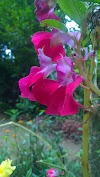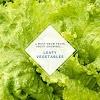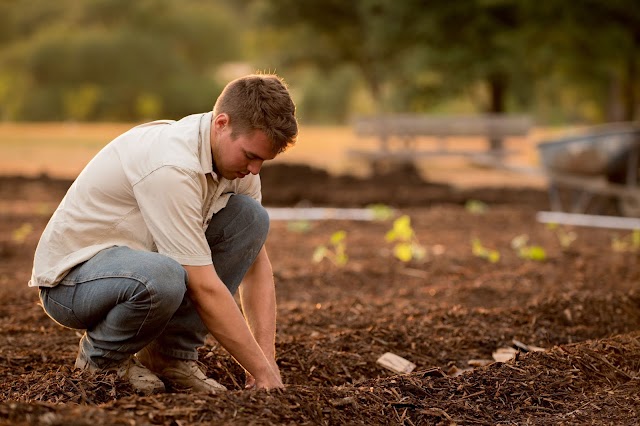ABOUT 'IPOMOEA BATATAS' PLANT
Ipomoea aquatica
FAMILY:- CONVOLVULACEAE
BOTANICAL NAME:- Ipomoea batatas
Syn :- Batatas edulis
VERNACULAR NAMES:
SINHALA : Bathala
TAMIL : Wattalakklangu
ENGLISH : Sweet potato
DESCRIPTION :
Perennial plant grown as an annual under cultivation. The vines are either green or red or purple in colour and about 4-16 feet long. The vines may be hairy, especially at the nodes. The roots vary according to the colour of the outter skin, as well as the colour of the inner flesh, depending on the varieties.
LEAVES:- They are heart shaped, with the margins either toothed or entirly or deeply lobed. In some varieties the leaves may be tinged with a slight purple.
FLOWERS:- They are funnel shaped, and either bluish or purple (Dassanayake and Fosberg, 1980).
DISTRIBUTION :
Sweet potato is endemic to Central America (Querol, 1992; Tindall 1993) from where the Dutch brought it to Sri Lanka in the 17th century. Sweet potatoes can be grown from sea level up to an elevation of about 1,000 m. It is well adoptable to high rainfall areas.
When we talk about the origin or this plant, there is a famous folktale a Sinhala. Once upon a time, a mother visited her son's residence where he lives with his wife. When the mother visited her son, her daughter-in-law did not feed her and the mother was ill-treated by her daughter-in-law. Having felt himilated, mother went back to her home. As soon as mother-in-law disappeared from daughter-in-law's vicinity, she went to the kitchen to eat her lunch. To her dismay and surprise, she found blood in the container in which she had cooked rice. It is widely believed that the rice became blood due to her mother-in-low's carse. The daughter-in-law then threw the rice because of the blood outside. After some time, she was wonderstricken to see a plant growth in the place where she threw the rice. The plant has swallowed roots which was found to be an edible food. Since then it was widely believed that the origin of this plant is rice and blood, it was named as "Bathala" in Sinhala where "Batha" and "Lay" stand for rice and blood respectively. Bathalay then customarily came to be pronounced as Bathala in recent times.
EDIBLE PARTS : The roots and tender leaves.
FOOD USE: Roots are boiled or baked or roasted and eaten. They can be used in preparing curries and pastries. Dried chips of sweet potato are fried and eaten as a snack. Tofees are also made from roots. Tender leaves and stem are eaten as green vegetables.
NUTRITIONAL AND THERAPEUTIC VALUE :
(Roots)
Moisture - 68.5 g,
Energy -120 Kcal,
Proteins -1.2 g, Fats -0.3 g,
Carbohydrates -28.2 g, - Calcium - 46 mg, Phosphorus - 50 mg,
Iron - 0.8 mg,
Carotene - 6 meg,
Thiamine -80 meg,
Riboflavin -40 meg,
Niacin -1.2 mg,
Vitamin C -1 mg.
(Greens)
Moisture 80.79,
Energy- 63 kcl,
Protein - 4.2,
Fat - 0.8,
Carbohydrates - 9.7,
Calcium - 360 mg,
Phosphorus - 60 mg,
Iron -10 mg,
Carotene - 750 meg,
Thiamine - 70,
Riboflavin - 240 meg,
Niacin - 1.7 mg,
Vitamin C - 27 mg (Perera et al., 1979).
Sweet potato tops, particularly the purplish ones, are used for diabetes. Leaves are applied for boils, carbuncles and pimples. Boiled sweet potato is good for diarrhea (De Pauda and Pancho, 1989).
Medicinally, paste of roots or leaves is applied to scorpion-bite with benefit.
OTHER USES : Tubers are used as a source of starch, glucose, and alcohol. Leaves are fed to livestock.
ENVIRONMENTAL RESPONSE:
Well drained soil is required. Optimal temperature is 24-25°C and the rainfall should be in the range of 750-1250 mm. Daylength does not affect the yeild.
CULTIVATION :
Areas for cultivation - Sweet potatoes can be cultivated successfully in the low-country and mid country wet zone in Sri lanka.
Planting season - Can be grown during the Maha and the Yala seasons. Planting is usually commenced with the early rains.
Land preparation - It involves ploughing and dishing the soil to break down the clods and remove all trash and stubble. The land is then ridged with a ridger.
Planting material - It consists of stem cuttings, about 15-25 inches long. Cuttings maybe taken when the vines begin to run from a newly established field or at harvest time.
Spacing - The cuttings are planted in such away as to bury about 2-3 nodes. The planting is done about 45 cm apart on the ridge.
Irrigation - Irrigation is required during drought seasons.
Fertilizer - Application of fertilizer will increase the yield of tubers. Application of NPK is generally recommended
Time to harvest - depending on the variety, the crop can be harvested between 3 5-5 months from planting.
Harvesting - It involves lifting of the tubers, which is usually done manually with the mamoty.
Yeild - One plant may produce 40-50 tubers, weighing from 100 g to 1.0 kg. A yeild of 08 - 10 t/ha to normally obtained.
STORAGE :
The harvested tubers should be stored in a cool and dry place with good ventilation








